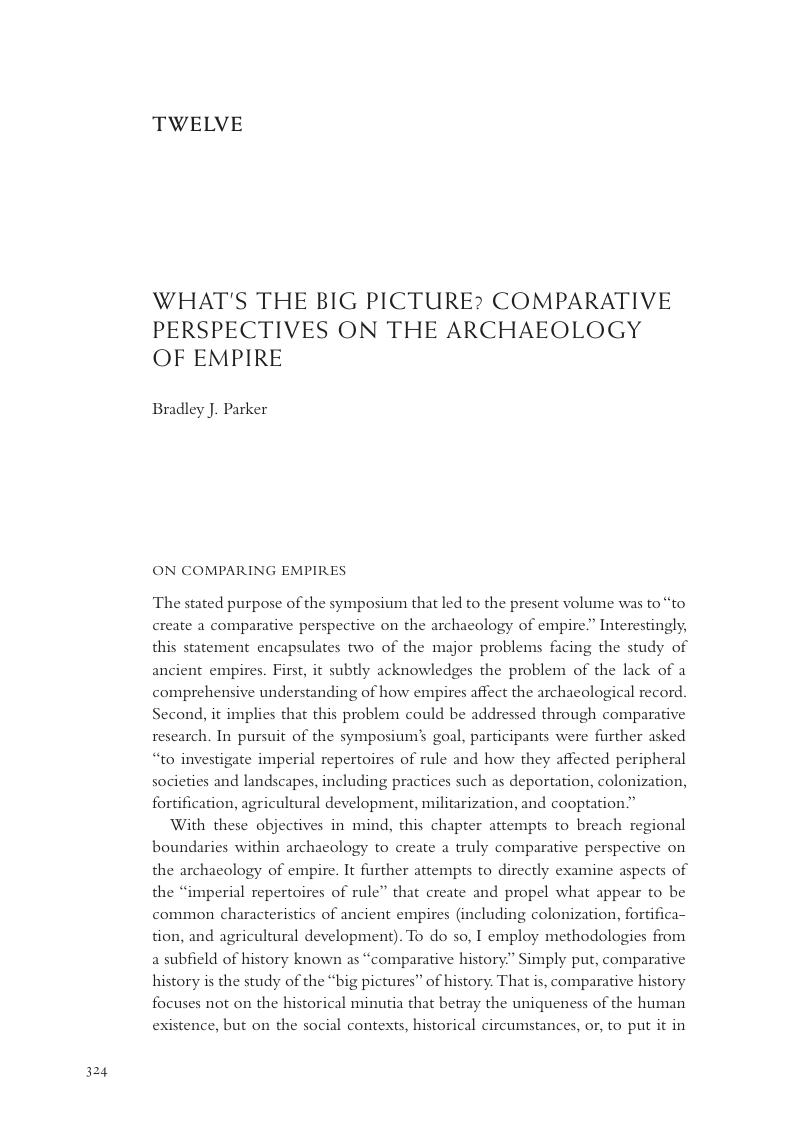 The Archaeology of Imperial Landscapes
The Archaeology of Imperial Landscapes Book contents
- The Archaeology of Imperial Landscapes
- The Archaeology of Imperial Landscapes
- Copyright page
- Dedication
- Contents
- Figures
- Tables
- Contributors
- Additional material
- One Ancient Empires on the Ground
- I The Transformation of Rural Societies and Landscapes
- II The Transformation of Peripheral Societies and Landscapes
- III Comparing Repertoires of Rule in Rural and Peripheral Regions
- Eleven Strategies of Empire Expansion
- Twelve What’s the Big Picture?
- Thirteen Towards a Patchwork Perspective on Ancient Empires
- Index
- References
Twelve - What’s the Big Picture?
Comparative Perspectives on the Archaeology of Empire
from III - Comparing Repertoires of Rule in Rural and Peripheral Regions
Published online by Cambridge University Press: 04 April 2018
- The Archaeology of Imperial Landscapes
- The Archaeology of Imperial Landscapes
- Copyright page
- Dedication
- Contents
- Figures
- Tables
- Contributors
- Additional material
- One Ancient Empires on the Ground
- I The Transformation of Rural Societies and Landscapes
- II The Transformation of Peripheral Societies and Landscapes
- III Comparing Repertoires of Rule in Rural and Peripheral Regions
- Eleven Strategies of Empire Expansion
- Twelve What’s the Big Picture?
- Thirteen Towards a Patchwork Perspective on Ancient Empires
- Index
- References
Summary

- Type
- Chapter
- Information
- The Archaeology of Imperial LandscapesA Comparative Study of Empires in the Ancient Near East and Mediterranean World, pp. 324 - 350Publisher: Cambridge University PressPrint publication year: 2018


